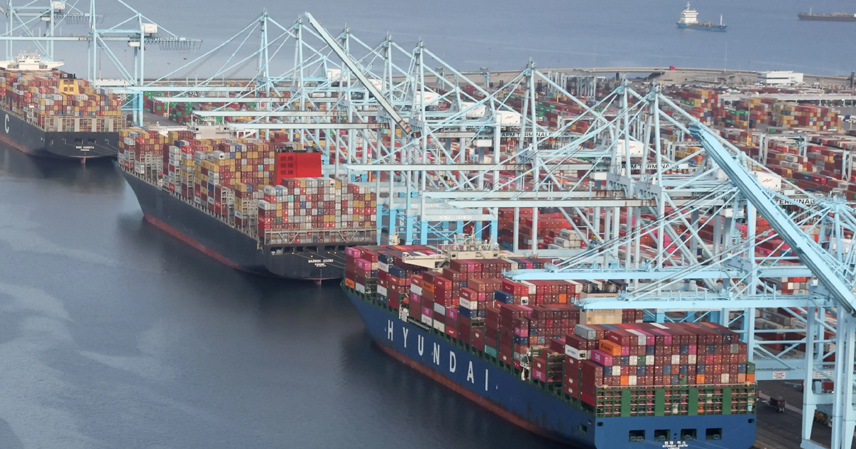The United States’ new “port entry fee” on Chinese-owned vessels officially took effect yesterday — and it has already thrown the global shipping industry into confusion. The rules are so vague that shipowners must decide for themselves whether they need to pay, and how much. Even the U.S. Customs and Border Protection (CBP), which is supposed to enforce the regulation, reportedly lacks the manpower and infrastructure to implement it.
The measure, introduced under the banner of “reviving American shipbuilding and protecting domestic steelworkers,” is being hailed by Washington as a patriotic boost to industry. But in reality, it exposes how far the once-dominant U.S. shipbuilding sector has fallen.
From Global Powerhouse to Near Collapse
Half a century ago, the U.S. shipbuilding industry stood at the top of the world. Today, the number of American shipyards has shrunk by over 70%, and its global market share has dropped below 1%.
Worse yet, building a ship in the U.S. costs three to five times more than in China or South Korea — and takes more than a year longer to deliver. Even the much-hyped Constellation-class frigate program for the U.S. Navy is mired in delays and budget overruns. Under such conditions, talk of reviving America’s civilian shipbuilding industry sounds more like wishful thinking than an achievable goal.
In truth, the new “entry fee” looks less like a revival plan and more like a symbolic penalty — a political gesture with little practical benefit. The American manufacturing base has already been hollowed out; blocking ships “with Chinese ties” from U.S. ports won’t bring jobs back — it will only drive global orders to Japan and South Korea instead.
Confusing Rules, Clumsy Enforcement
What counts as a “Chinese-owned” vessel? Do smaller tonnage ships fall under the rule? The new policy fails to clarify even the most basic definitions. Instead, the U.S. government has delegated judgment to the shipowners, asking them to “self-assess” and voluntarily report payments.
To make matters worse, CBP lacks staff and a functioning system to process the fees. The recent government shutdowns and budget freezes have left the agency severely understaffed. After a year and a half of “preparation,” Washington rolled out a rule that effectively depends on shipowners’ honesty — a laughable situation for a policy meant to strengthen national control.
China’s Precision vs. America’s Confusion
While the U.S. stumbles through administrative chaos, China’s own maritime fee policy stands in stark contrast. Under Beijing’s system, any vessel with more than 25% U.S. ownership must pay, with clear exemptions for American-flagged ships built in China or those entering empty for maintenance.
The enforcement mechanism is automated and airtight. Customs, maritime, and port systems are fully integrated: once a ship docks, its fee invoice is automatically generated, and clearance is blocked until payment is made. On day one of implementation, major ports like Shanghai and Guangzhou collected over 1 billion yuan in fees — transparent, efficient, and fully enforceable.
A Costly Policy That Punishes America Itself
Analysts estimate the “port entry fee” will cost the world’s top 10 shipping companies over $3.2 billion annually. These costs will inevitably cascade through the supply chain, raising freight rates by $280 per container at first, and potentially up to $800 by 2028.
For U.S. importers and consumers, this is déjà vu. During the 2021 shipping crisis, record freight costs pushed inflation higher and squeezed small businesses. The same will happen again — because the U.S. economy still heavily depends on Chinese goods. The result: Americans will pay the price for Washington’s political signaling.
No wonder more than 300 U.S. trade groups, retailers, and farm associations have voiced opposition. They know this policy is a boomerang — it was thrown at China but will ultimately hit American ports, workers, and households.
Some shipping firms have already begun adjusting routes: canceling stops in Chinese ports or rerouting through Mexico, where goods are transferred by land into the U.S. These detours will cost time and money, but many see it as preferable to navigating Washington’s unpredictable rules.
As a result, U.S. ports could lose up to $7 billion in annual revenue, while congestion, layoffs, and inflation ripple across the economy. What was meant to “protect America” now risks undermining its own logistics system and trade competitiveness.
The Real Problem: Policy Without Capacity
The chaos surrounding the “port entry fee” reveals more than just industrial decline — it exposes a deeper governance failure. The U.S. can still design policies, but it increasingly lacks the administrative capacity to execute them effectively.
By contrast, China’s regulatory machinery — whatever one thinks of its politics — shows how clarity and coordination can turn a policy into an operational system overnight. The U.S., meanwhile, continues to struggle under bureaucracy, divided authority, and outdated infrastructure.
In the end, America’s “port entry fee” may be remembered not as a strategic move, but as another self-inflicted wound in the country’s long struggle to reconcile politics with economic reality.



